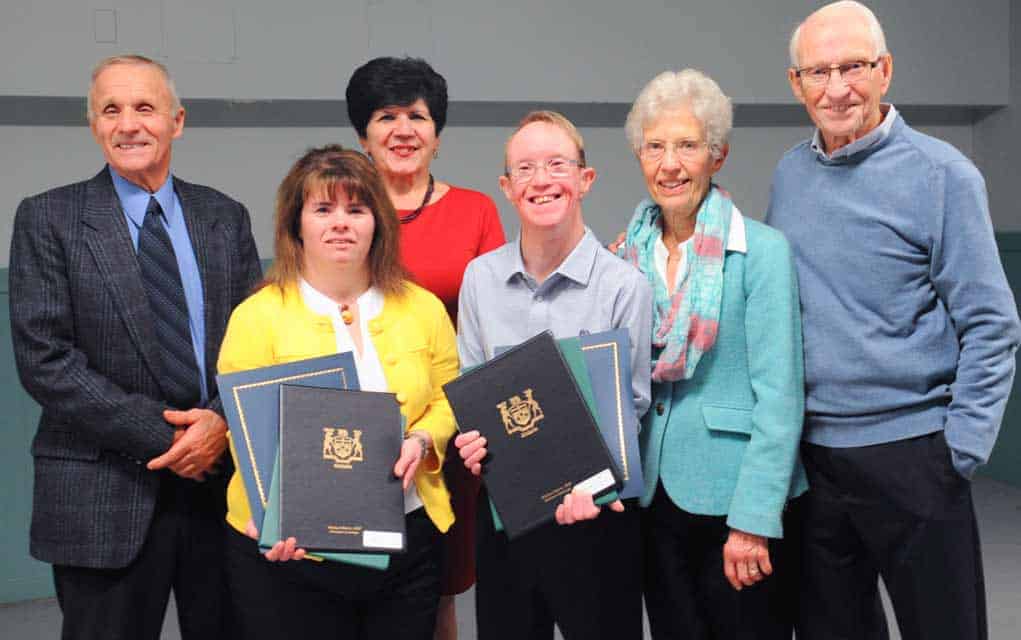Having no firsthand experience with war, or even a living relative who took part in the historic battles, today’s school kids may find it difficult to appreciate the significance of Remembrance Day.
With that in mind, teachers across the townships have developed various initiatives, including the use of art and song, to bridge the disconnect for youth.
That was apparent at John Mahood Public School in Elmira.
Students from kindergarten through to Grade 6 had their art and poems on display in the gymnasium during a Remembrance Day ceremony last week.
The ceremony opened with local Scouting representatives carrying the flag into the gym. Students then heard trumpeting from Uwe Claussen of the Fergus Brass Band and in turn shared their rendition of Song of Peace, led by teacher Dave Nunn.
“It is a two-part song, so there are English words and Latin words. Its key message is centred on how we are so lucky to live in a peaceful country and making sure that we continue to embrace a peaceful kind of approach,” Nunn explained.
Students from Grades 1 through to 6 had been practicing the song in both English and Latin, with the Latin translation being ‘grant us peace.’
“One of the things that we have talked about in class and we have talked about in the assembly was how we are so fortunate to live in a society where the children get to enjoy the freedom to come to school, the freedom to be taken care of medically. Universal health care and education are fundamental principles of our country, and Remembrance Day is a chance for us to be grateful to people who have protected those principles,” he said.
For both Nunn and art teacher Claire Campbell, it was important to find a common ground in bridging the gap for students, from something that had happened many years ago to understanding that that was the framework for the society we have today and allowing us to live the life we enjoy here.
“It’s tough because it isn’t their grandparents, their aunts, their uncles – there is a few generations [since]. So our job as teachers is to make sure that we can teach these kids and show them and tell them about what happened during the wars and why,” Campbell explained.
For Campbell, that involved having her pupils participate in the Royal Canadian Legion poster contest. Students got to show what they thought about Remembrance Day using different symbols such as poppies and soldiers, and appropriate colours to symbolize peace, war and hurt expressed through posters or poems.
“We read different books and we talked about why people would go to war, the reality that many lives were lost and the reason that they fought was for our freedom,” she explained. “So the big message was that we want to remember these people because they gave their lives for us.”
Nunn added, the terminology for who soldiers were was a driving force in bridging that connect for youth, who he proudly said embraced and respectfully commemorated the day.
“It is interesting because we use words like soldiers and nurses, pilots and people in the navy and we use terms like this but really we just need to think of these people as fathers and mothers, brothers and sisters and that is more obvious and that is language that children can connect to,” he said. “So that is what I have been trying to incorporate into our conversations in the classroom.
“In some circumstances, using those terms, terms of the family, I think puts it is much more understandable and accessible framework,” he added.
Listed on the Royal Canadian Legion website are tools, including the annual national poster and literary contests, for speaking with youth about the importance of Remembrance Day, specifically notes on military history and themes in stories, songs and poems to help bridge that disconnect.









